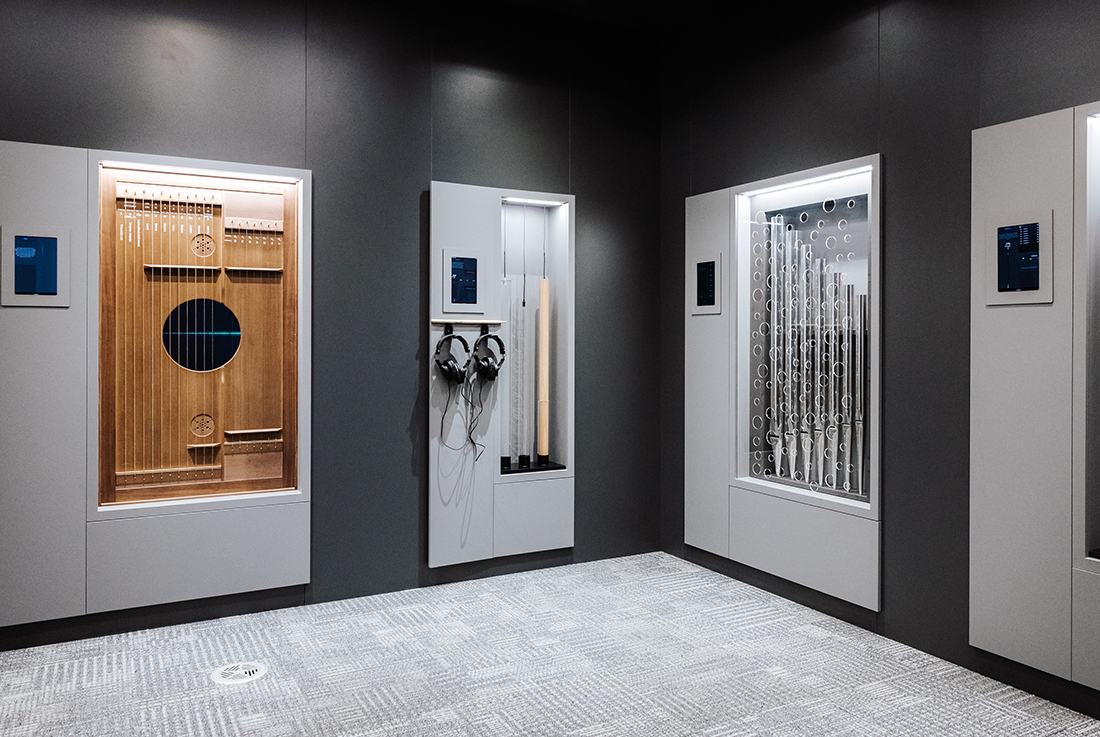Geberit, a leading company in sanitary technology in Europe, inaugurated its acoustic laboratory on Thursday, November 23, 2023, at its facility in Ruše. This unique acoustic space represents a significant addition for the company and is the result of an important developmental project whose goal is to showcase and raise awareness about sound through various experiments in an accessible manner.
The idea for the acoustic space originated a decade ago during a family trip to Vienna. The company’s director, Miran Medved, recalled the excitement of visiting the House of Music, an institution where visitors can explore the meanings of sound, melody, noise, harmony, and silence at diverse stations. “There, I began thinking about how we could similarly introduce our systems to people in a simple and understandable way,” he explained. The acoustic laboratory was established at the company’s Ruše location, offering substantial potential for educating the various target groups with whom Geberit collaborates. Medved added, “Here, we function as an educational institution, where anyone can arrange a visit and experience this acoustic space.”
The acoustic space features various stations that visitors can explore. While each station is interesting in its own right, those with zithers and flutes may hold particular value. Local artisans collaborated in crafting these stations. Zithers were custom-made by Mr. Vlado Nunčič. The construction itself was a unique project, involving the selection of suitable wood, drying it to the appropriate humidity before crafting zithers to fit the room’s design. These are not conventional zithers, as they have a hole in the middle with a screen displaying the frequency graphically. The zither station can demonstrate different frequency spectra perceived by the human ear, as the frequency of a sound wave is perceived as the pitch.
Similar stories accompany other stations where experiments aim to illustrate sound connected to building physics. The project leader, Mr. Denis Sejfić, explained, “We were also attentive in choosing experiments or demonstrations of sound to serve as aids in better understanding sound transmission in buildings.”
Architect Janja Merše added, “Once the technical part of planning the space was completed, we had to give the entire story a form.” She mentioned that they invited a group of students from the Faculty of Architecture to collaborate, emphasizing the involvement of numerous groups and individuals in preparing the acoustic space. “We had a clear idea and goal, but the journey there was long, and we had to find experts to realize it. There was a lot of experimentation between the idea and the goal.”
The mini sound lab is also interesting; it mimics a hotel bedroom, representing a realistic construction situation. This space is entirely isolated from the rest, allowing a better portrayal of real sound transmission. It shows a suboptimal system that is not acoustically optimized, along with two systems that demonstrate acoustically optimized systems in installations. This setup provides a sense of noise in a real construction situation, showcasing how different implementations of sanitary systems affect sound transmission. The common theme here is understanding sound and the ability to assess its intensity—initially with the naked ear and then with values directly measured during each flush. The interior of this enclosed room simulating a bedroom is equipped with a microphone and a television screen graphically illustrating current noise values.
Geberit’s facilities in Bezena have been something special for the past decade, with an educational center featuring its water tower. Now, with the addition of the acoustic space, they become even more remarkable.
Manufacturer
Geberit








